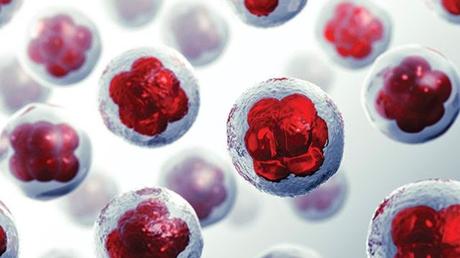In a lab setting, cells are grown and maintained by the process of cell culture. Cells are typically cultivated on a flat surface, such as a petri dish or a flask, in a two-dimensional (2D) culture method. However, due to its inability to precisely replicate the three-dimensional (3D) microenvironment of cells in the body, 2D cell culture has some drawbacks. On the other hand, 3D cell culture presents a more physiologically appropriate method to investigate cellular processes and disorders.
Cells are grown in an environment that more closely resembles their native tissue environment in 3D cell culture. Numerous techniques, including scaffold-based, scaffold-free, and organoid culture, can be used to accomplish this. Using a biocompatible scaffold material, such Matrigel or collagen, to create a three-dimensional framework for cells to grow is known as scaffold-based three-dimensional culture. Scaffold-free techniques, such hanging drop, spheroid, and microfluidic devices, rely on cellular interactions rather than a scaffold to build a three-dimensional structure. Stem cells are used in organoid culture to develop organ-like structures in vitro.
The fact that 3D cell culture more closely mimics the in vivo milieu, which can have a considerable influence on cellular behavior and function, is one of its main benefits. Cells are cultivated in 2D culture on a flat surface, which does not replicate the organic structure of tissues. In comparison to cells grown in 3D, this can result in variations in cell signalling, gene expression, and medication sensitivity. The extracellular matrix (ECM), a web of proteins and other chemicals that supports cells in tissues in terms of structure and biochemistry, may also be more accurately replicated by 3D cell culture. In order to promote cell development and function, 3D culture can offer a more physiologically realistic ECM, which plays a critical role in controlling cellular behavior.
The ability to more accurately and effectively mimic illnesses and test medications using 3D cell culture is another benefit. Cells may react differently in 2D culture than they would in the body, which might produce incorrect results in drug screening. A more precise illustration of cellular behavior may be obtained by 3D culture, which can better simulate the intricate cell-cell and cell-ECM interactions that take place in tissues. This can be very helpful in the drug development process since 3D culture can find prospective therapeutic candidates that 2D culture would have overlooked.
3D cell culture offers a more physiologically relevant system to study cellular processes and diseases. It provides a more accurate representation of the in vivo microenvironment, including the ECM and cell-cell interactions. This can lead to more reliable and accurate results in drug screening and disease modeling. While there are still challenges to overcome in 3D cell culture, such as scalability and reproducibility, it holds great promise for advancing our understanding of cellular biology and improving drug development.

